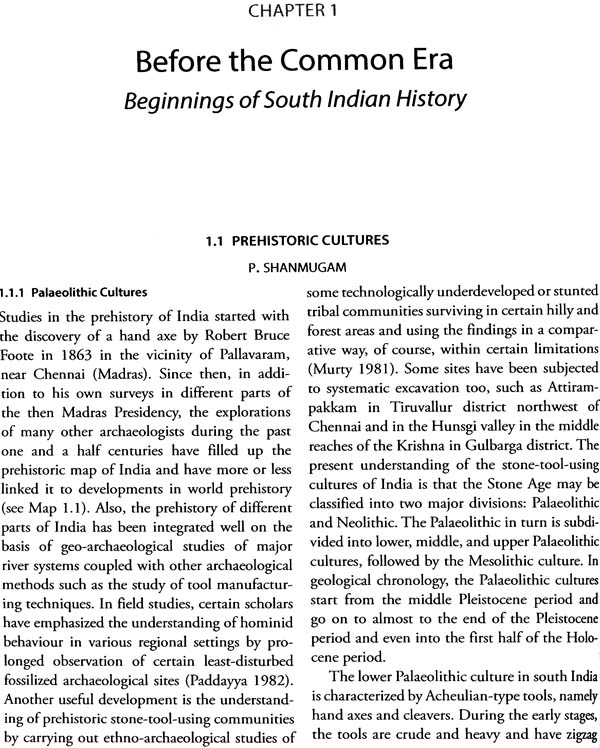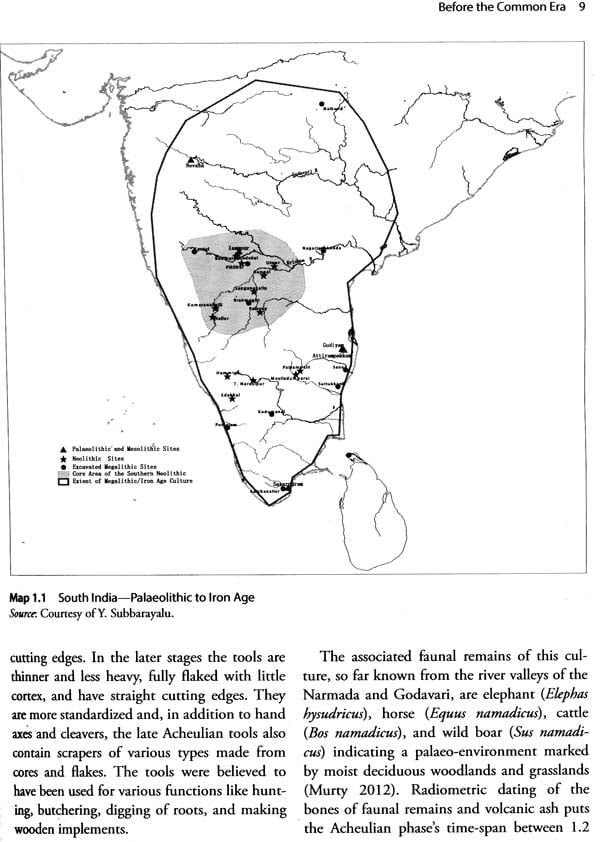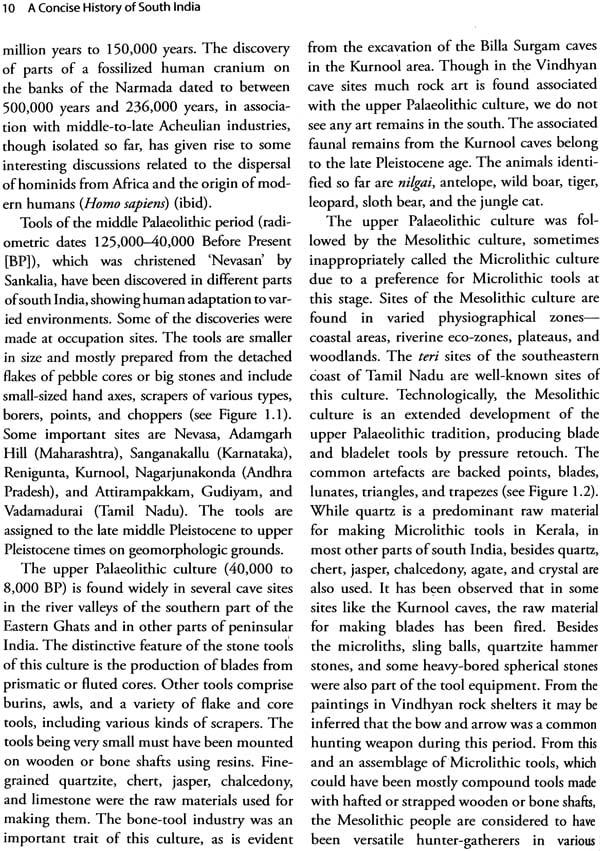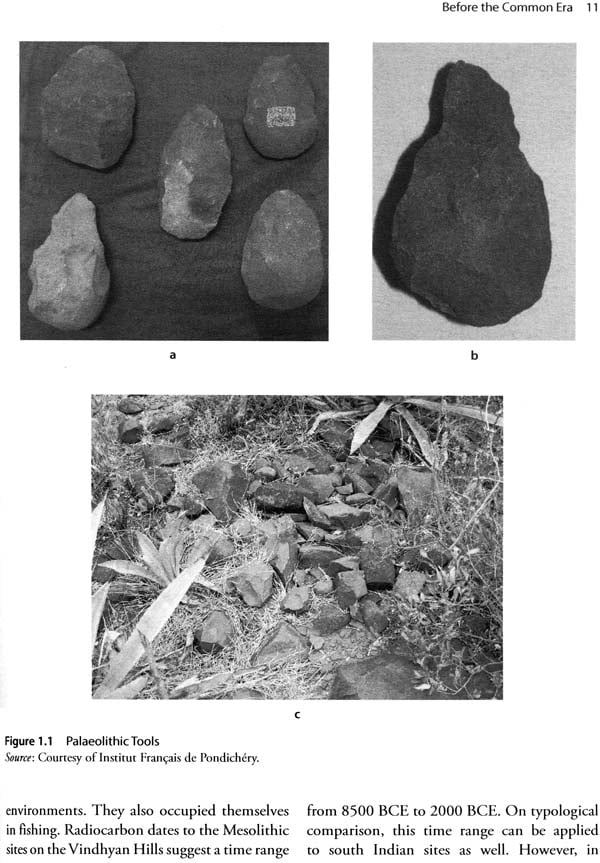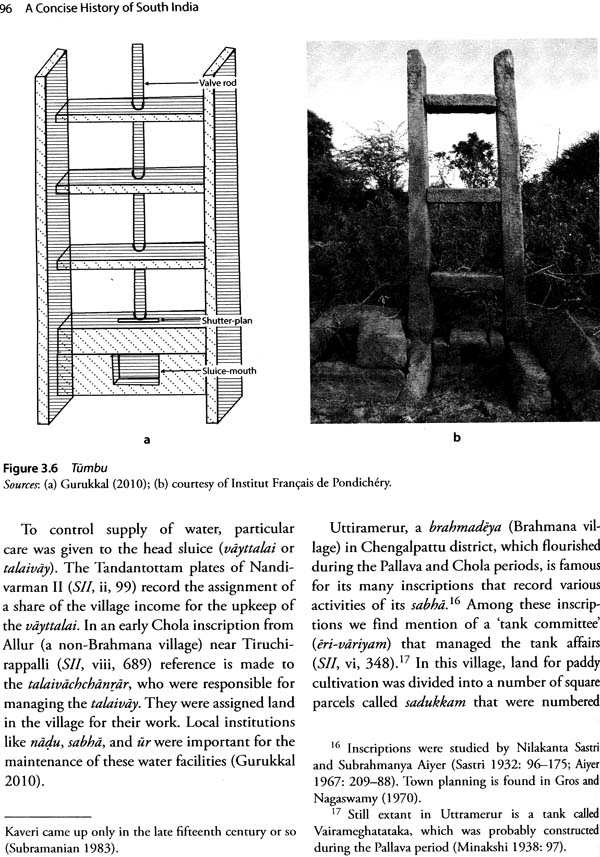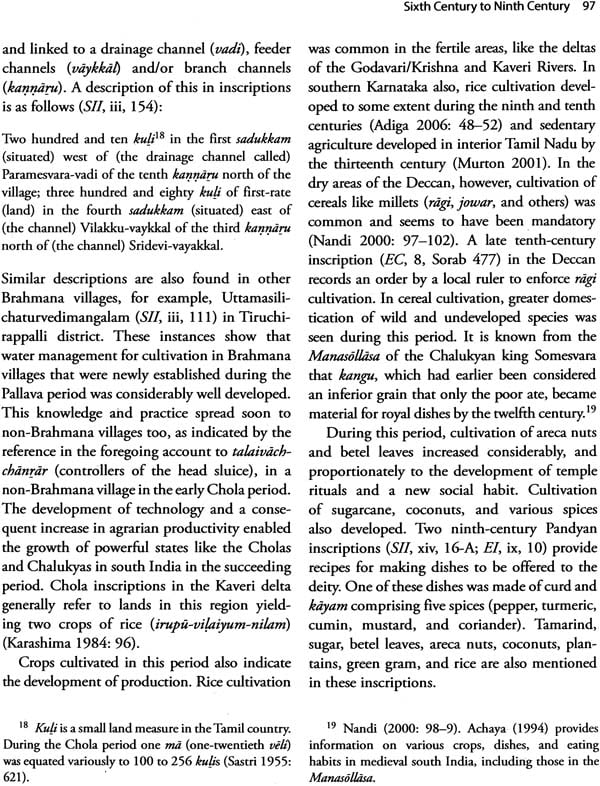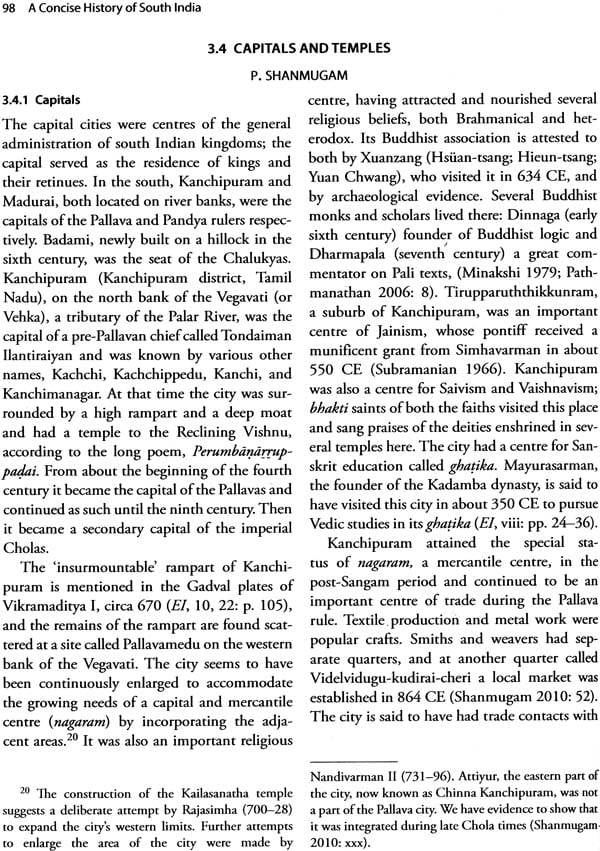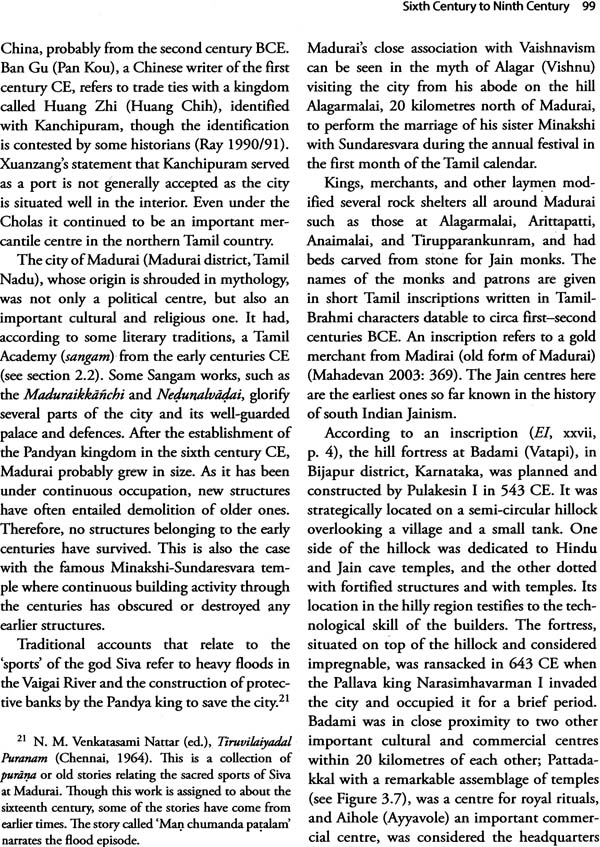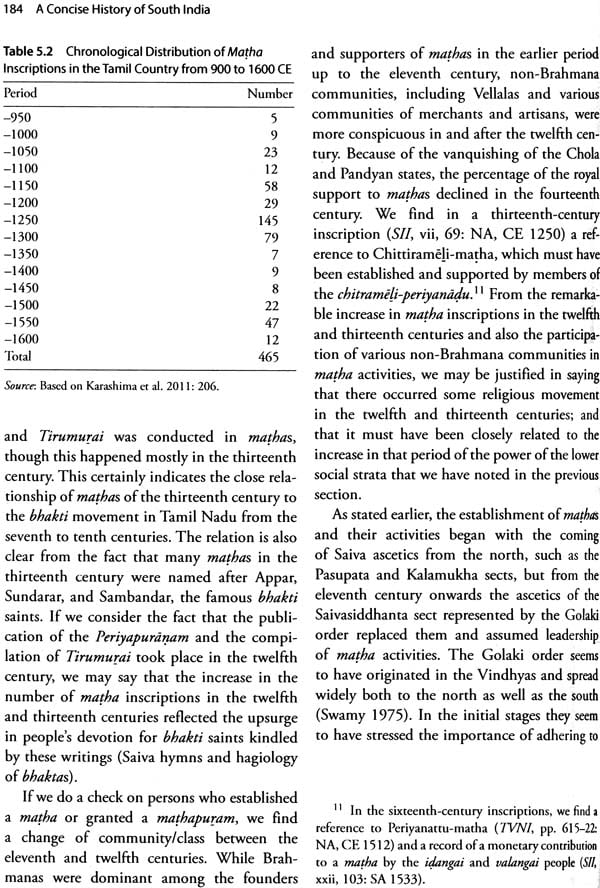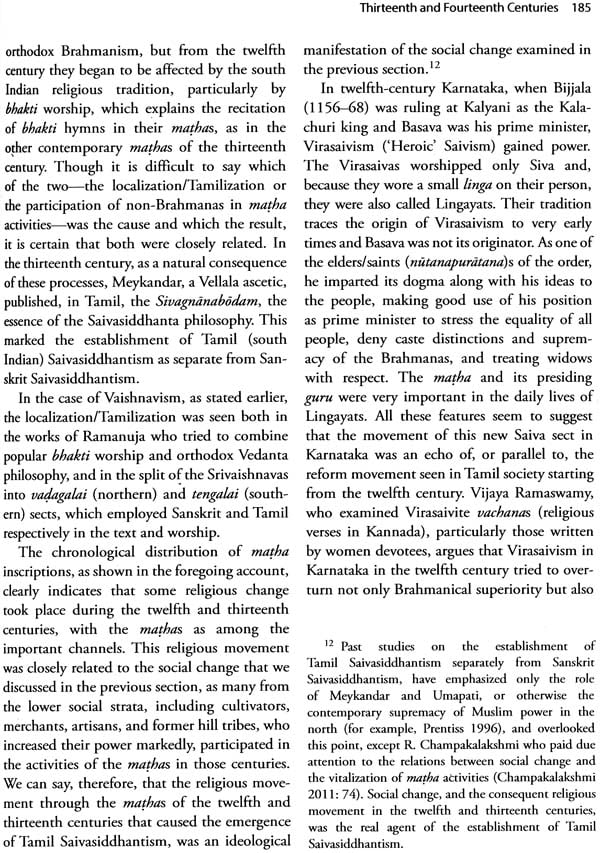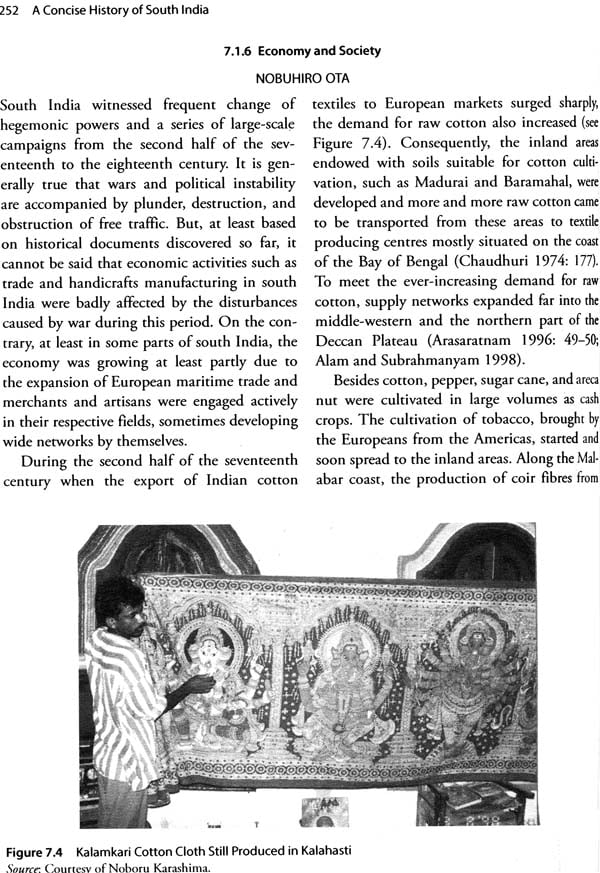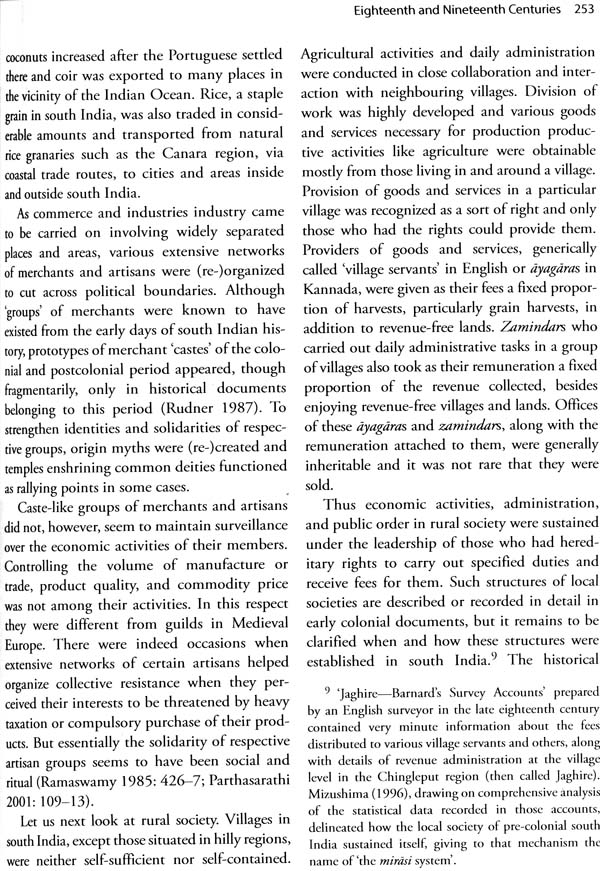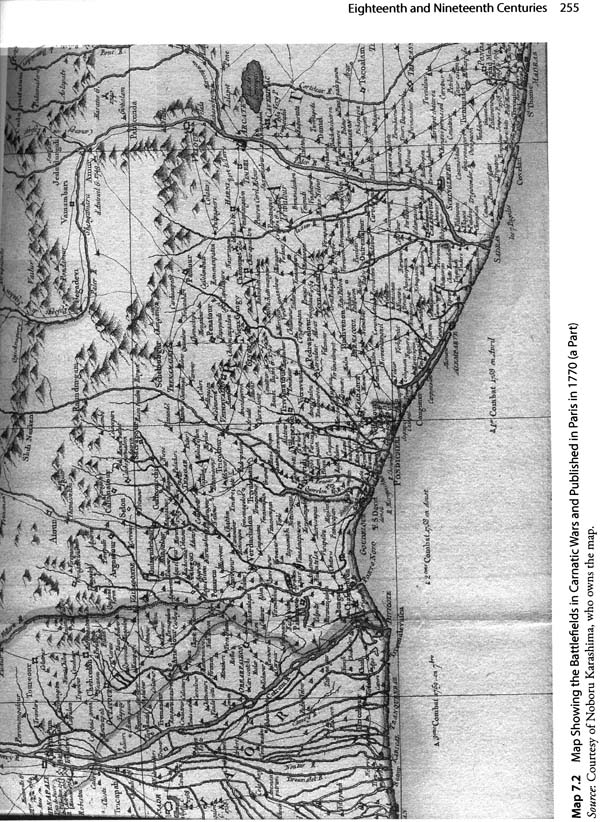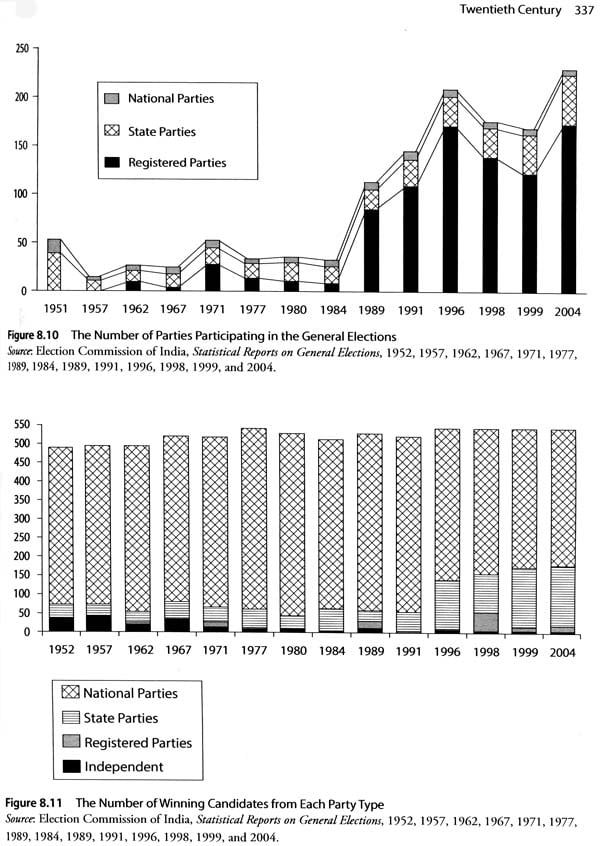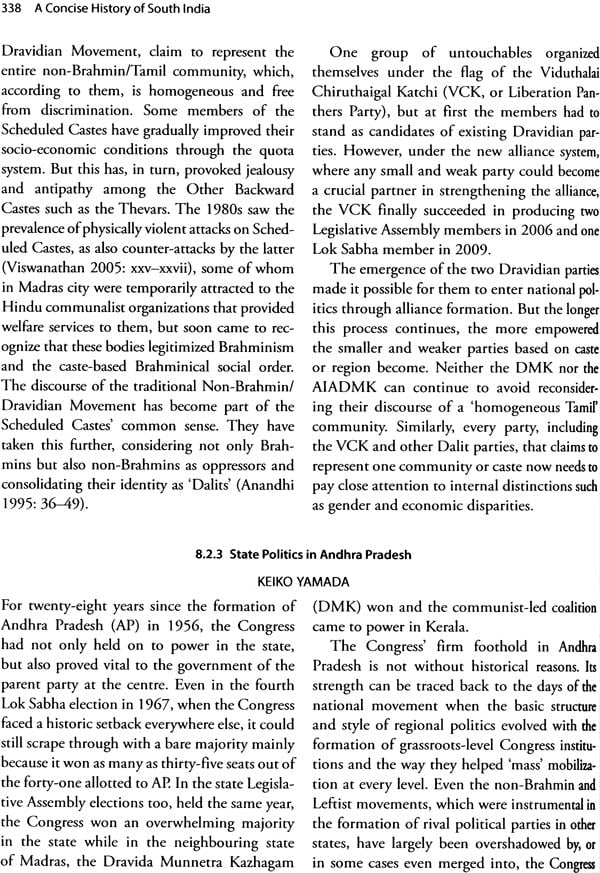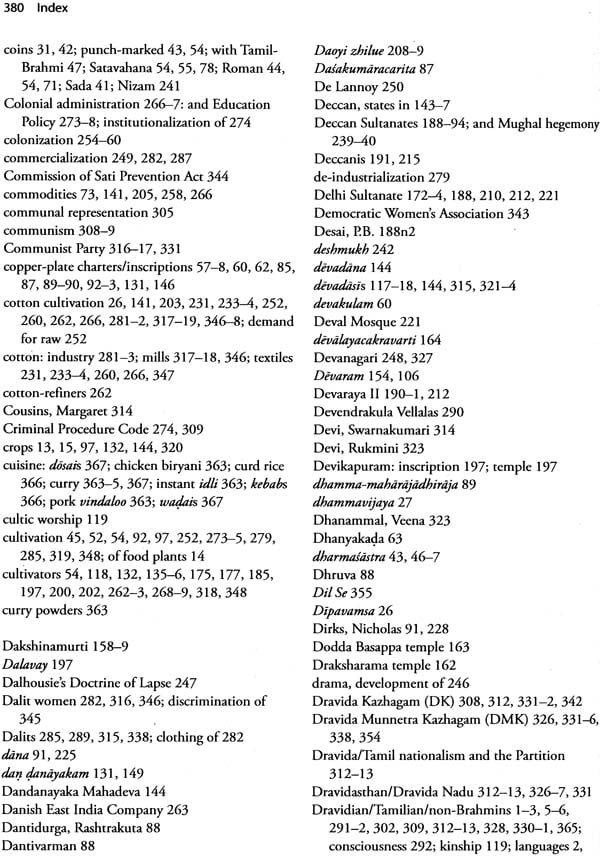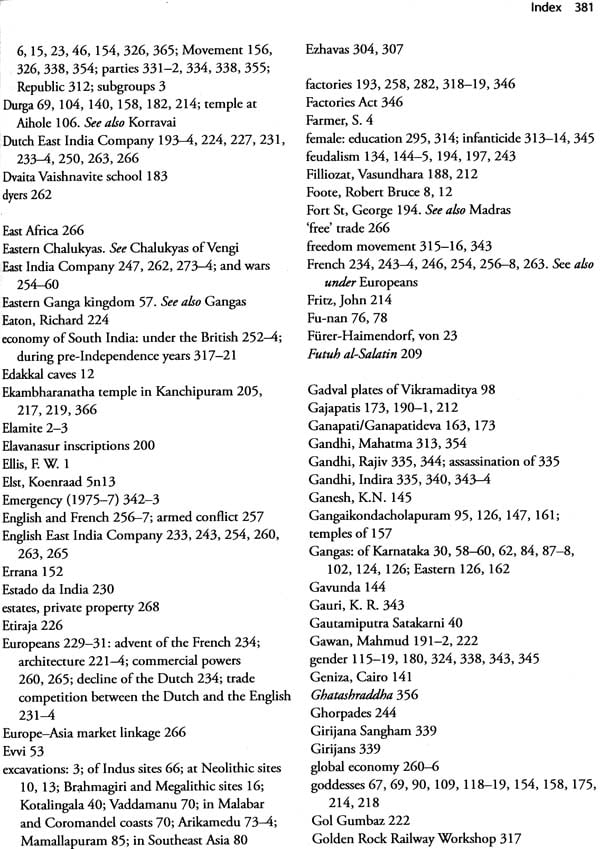
A Concise History of South India (Issues and Interpretations)
Book Specification
| Item Code: | NAL615 |
| Author: | Noboru Karashima |
| Publisher: | Oxford University Press, New Delhi |
| Language: | English |
| Edition: | 2014 |
| ISBN: | 9780198099772 |
| Pages: | 418 (Throughout B/W Illustrations) |
| Cover: | Paperback |
| Other Details | 9.5 inch x 7.0 inch |
| Weight | 680 gm |
Book Description
The course of south Indian history from pre-historic times to the contemporary era is a complex narrative with many interpretations. Reflecting recent advances in the study of the region, this volume provides an assessment of the events and socio-cultural development of south India through a comprehensive analysis of its historical trajectory.
Investigating the region’s states and configurations, this book cover a wide range of topics that include the ancient kingdoms, advancement of agriculture, new religious movements based on bhakti, and consolidation of centralized states in the medieval period. It further explores the growth of industries in relation to the development of East-West maritime trade in the Indian Ocean as well as the course of commercial relations with various European countries. The book then goes on the discuss the advent of early-modern state rule, impact of the raiyatwari system introduced by the British, debates about whether the region’s economy developed or deteriorated during the eighteenth century, decline of matrilliny in kerala, emergence of the Dravidian movement, and the intertwining of politics with contemporary popular culture.
Well illustrated with maps and images, and incorporating new archaeological evidence and historiography, this volume presents fresh perspective on a gamut of issues relating to communities, languages, and cultures of a macro-region that continues to fascinate scholars and readers alike.
Noboru Karashima is professor Emeritus, University of Tokyo, Japan. Former President of the Epigraphical Society of India, Mysore, and of the International Association of Tamil Research, Paris, he was honoured with the Padma Shri in 2013.
In 1955, Nilakanta Sastri's excellent book on south Indian history, A History of South India, was published. Sastri, a professor at the University of Madras, contributed greatly to the establishment and development of south Indian historical study. As a Brahmin, however, his inclination was to emphasize the role of north Indian and Sanskrit culture in the development of south Indian society. This, I believe, is a blemish in his work. The book also left out the modern and contemporary periods, dealing only with the ancient and medieval periods up to the fall of the Vijayanagar state. Nevertheless, his examination of the sources of south Indian history, including the corpus of inscriptions, is thoroughgoing and meticulous, and his argument is always prudent except occasionally when affected by the bias mentioned above. On the whole, therefore, it is an excellent book and nobody can quite match Sastri in bringing out another such work.
For other reasons also, it must have been very difficult for historians since then to write a new book on the same topic. During the 1960s, the Dravidian movement in south India, which was actually the manifestation of Tamil nationalism, became mainstream not only in the political but also in the academic field. Therefore, any writing that the Tamil nationalists did not like, they attacked severely even if its content was academically acceptable. As a result, no historian took up this challenge, despite much advancement in the study of south Indian history since 1955, and particularly after 1980.
Another reason that historians may have found it difficult to write such a book must have come from a change in the concept of history. Until the 1950s, the style of history writing in India was what had long been practised in Europe, its main focus being political history illustrated by change of rulers, although after Independence, people were attracted to Marxist historical writing. During the 1960s and after, new trends appeared in history writing. In Europe, the influence of the Annales School gained ground, attracting scholars' attention to deep structure or long-term factors, and in India, the Subaltern studies started highlighting the role of the ruled instead of the rulers. After the fall of the Soviet Union in 1993, Marxist ideas lost their charm. In the midst of the academic storm of post-modernism towards the end of the century, the so-called linguistic turn severely damaged history writing (Clark 2004), and jean-Francois Lyotard sounded the death knell for 'grand narratives' (Lyotard 1984), making the writing of a general history more difficult.
Even if confronted with such difficulties, we cannot stop writing history. In China there is a proverb that goes, 'By investigating the old, we shall be able to know about the new'. Interpretation of the past, which is the task of historians, is important for the present and the future of our society. Therefore, considering the afore-mentioned situation and the fact that there have been many heated controversies these last forty years on various points of south Indian history, I will take up in this book certain issues in the long course of south Indian history and present to readers the interpretations historians can offer on these points of our past. For the convenience of readers, however, a conventional description of the political history of each period is also provided. These will be found in the first section of most of the chapters assigned to certain periods.
Since the publication of Sastri's book, many new archaeological discoveries have been made and new theories and interpretations presented. Some of these have been surrounded by controversies while others have not; despite this, I have tried to cover in this book all such points to acquaint the readers with the present state of study in south Indian history. More importantly, I have also included both modern and contemporary history, periods that Sastri's book does not cover. This, however, has made the scope of this work ambitious and it would have been impossible for me, a single person, to write this book. I have asked and received generous help from Y. Subbarayalu and P. Shanmugam, with whom I have been working on south Indian pre-modern history for a long time and from Tsukasa Mizushima and others who were my students at the University of Tokyo and have specialized in south Indian modern and contemporary history. Other scholars who are my friends, Haruka Yanagisawa, Parvathi Menon, Hiroshi Yamashita, and Mahalakshmi Rakesh, have also helped by contributing sections. I owe much to all these scholars, particularly Subbarayalu and Mizushima, who helped me with the editorial work as well. Subbarayalu has made thirteen fresh maps and the chronological tables of dynastic rulers for this volume. I am grateful to him.
Periodization of Indian history is a problem (Singh 2011: 1). Even in the case of the most commonly adopted periodization, which divides history into ancient, medieval, modern, and contemporary periods, there are still differences of opinion among scholars about characterizing and demarcating each period. In this book, I have divided south Indian history into several periods characterized by distinctive political, socio-economic, or cultural features, each comprising one to several centuries. Each chapter in this book is composed of such periods.
To place south India in context, its extent, if we were to define it geographically, is the area south of the Vindhyas up to the southern tip of the Indian peninsula, which was called Dakshinapada in Sanskrit literature. This includes parts of the states of Maharashtra, Chhattisgarh, and Odisha. However, if we were to define it linguistically, it is composed of the five states where the Dravidian languages are spoken, namely Karnataka, Telangana, Andhra Pradesh, Tamil Nadu, and Kerala. These five Dravidian states show cultural features that are distinct when compared to the area where Aryan languages are spoken. However, the remaining part adjacent to the Vindhyas, where Aryan languages are spoken, also contributed greatly to the creation of south Indian characteristics in the long course of history.
But then again, south India is not a solid and congenial unit, even if it is defined narrowly as the area where Dravidian languages are now spoken. It is composed of people belonging to different language groups and local traditions. We will notice differences, for example, between the Tamil people and the Kannada and Telugu peoples in their feeling towards north Indian or the so-called Aryan culture. Besides, there also exists, naturally, social and class differences among the people of south India. Among historians, of course, there are differences according to their stand-points in research.
Therefore, it is impossible that a history book such as this will satisfy all its readers. On the contrary, it is certain that this book will raise a volume of criticism that will revive old controversies or lead to new ones. However, I look forward to and welcome all criticism as a healthy sign, as it will advance the study of south Indian history. If this book becomes a spur to the publication of more books on south Indian history, I shall be extremely happy.
| List of Illustrations | xi | |
| Preface | xvii | |
| Note on Abbreviations, Diacritical Marks, Spellings, and Bibliographies | xxi | |
| Prologue: Dravidians-Immigrant or Indigenous | 1 | |
| 1 | Before the Common Era: Beginnings of South Indian History | 8 |
| 2 | First Century BCE to Fifth Century CE: The Satavahanas, the Early Tamil Polities, and Their Successors | 40 |
| 3 | Sixth Century to Ninth Century: The New- Type State and the Bhakti Movement | 84 |
| 4 | The Tenth to Twelfth Centuries: The Emergence of a Centralized State | 124 |
| 5 | Thirteenth and Fourteenth Centuries: Period of Social Change and Transition | 172 |
| 6 | Fifteenth Century to Seventeenth Century: Vijayanagar State and the Wider World | 188 |
| 7 | Eighteenth and Nineteenth Centuries: British Rule and Indian Society | 239 |
| 8 | Twentieth Century: Independence and After | 302 |
| Epilogue: Southern Spice-Seasoning the National Cuisine | 363 | |
| Chronological Tables of Dynastic Rulers | 369 | |
| About the Editor and Contributors | 374 | |
| Index | 376 |
